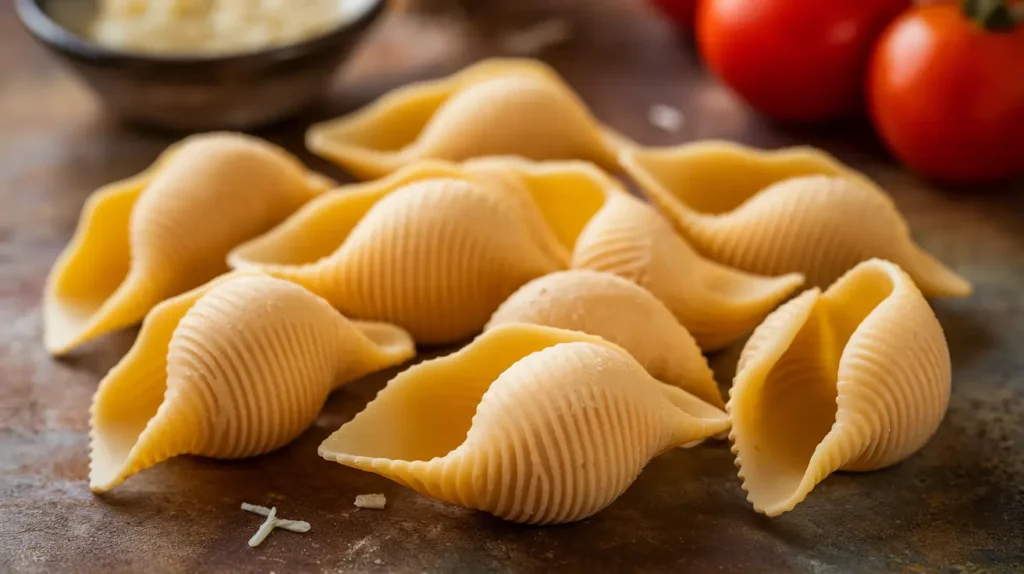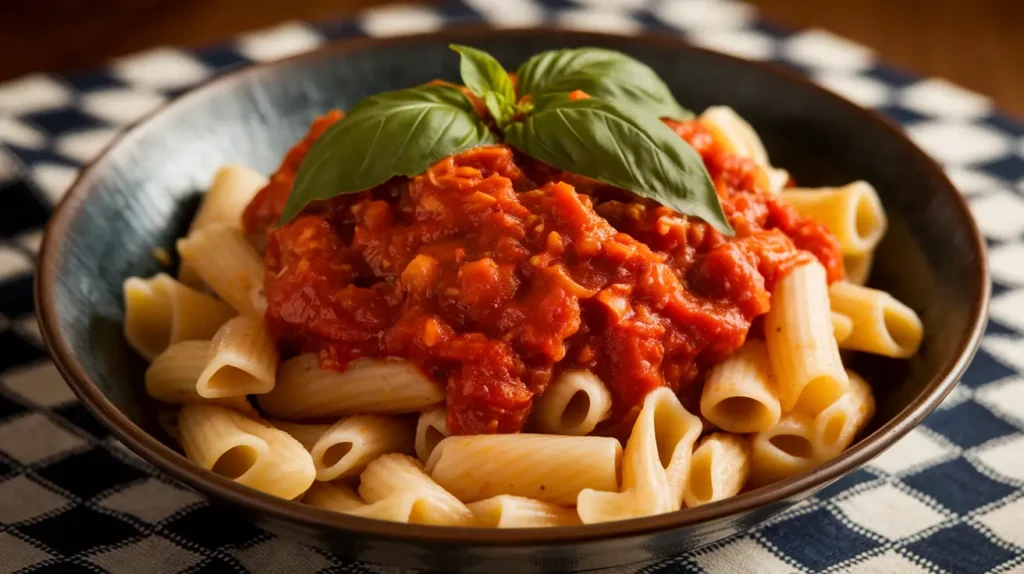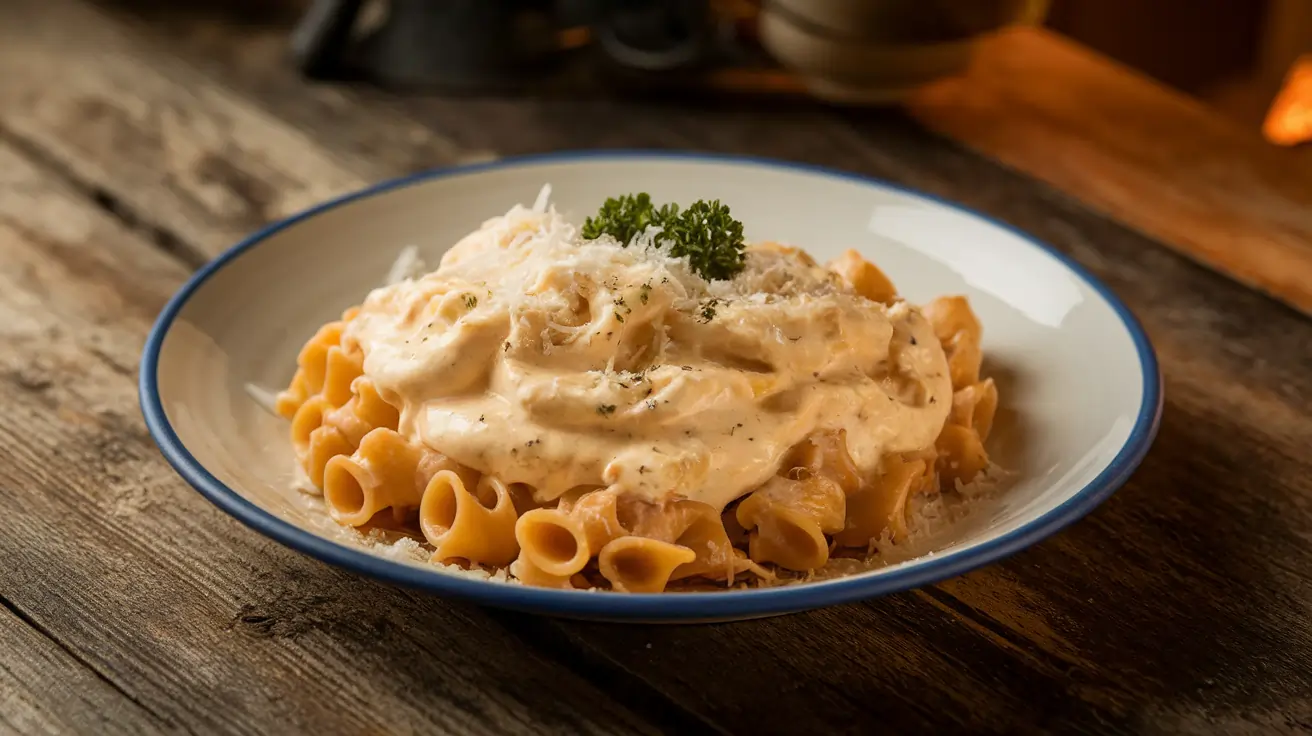How long do you cook lumache pasta? Ever stared at a box of lumache pasta and wondered, “How long should I actually cook this?”? You’re not alone! Getting the cooking time just right can make or break your meal. But don’t worry, I’ve got your back. Whether you’re a seasoned chef or someone just starting their pasta journey, this guide will help you master the art of cooking lumache pasta like a pro. 🍝
Table of Contents
What is Lumache Pasta?
If you’re unfamiliar with lumache pasta, let’s start with the basics. Lumache, which means “snail” in Italian, is a type of pasta shaped like—you guessed it—a snail shell. Its unique structure is perfect for scooping up sauces and holding on to flavors, making it a favorite for hearty and creamy recipes. Think of it as the pasta version of a cozy bowl!
“Lumache pasta isn’t just food—it’s a culinary experience.”
The Unique Shape and Texture of Lumache Pasta

The charm of lumache pasta lies in its shape and texture. Its hollow, shell-like form makes it an ideal vessel for capturing every drop of sauce. You’ll love how it adds an extra dimension of flavor to every bite. The ridges on the outside give it a slightly chewy texture, which is why cooking it just right is crucial.
Why Lumache is Perfect for Sauces
Ever tried eating soup with a fork? Frustrating, right? The same logic applies to pasta! Lumache is specially designed to scoop up chunky sauces, creamy alfredos, or even a simple marinara. Its shape helps the sauce cling to the pasta, so every bite is a burst of flavor.
Importance of Proper Cooking Time for Lumache Pasta
Cooking lumache pasta isn’t rocket science, but it’s easy to get wrong if you’re not careful. Overcook it, and it turns into a mushy mess. Undercook it, and you might as well be chewing rubber bands. Let’s explore why getting the timing right is so important.
The Impact on Taste and Texture
Cooking lumache pasta to perfection ensures that it retains its slightly firm, al dente texture. This not only enhances the eating experience but also makes the pasta a perfect canvas for sauces. Imagine biting into a soft but slightly chewy shell filled with a rich, savory sauce—pure bliss, right? 😍
Common Mistakes in Cooking Lumache Pasta
Let’s be honest: we’ve all messed up pasta at some point. Here are a few common mistakes to avoid:
- Skipping the Salt: Always salt your water! It’s your only chance to season the pasta itself.
- Overcooking: Follow the cooking time carefully to avoid a gummy texture.
- Not Stirring: Stirring prevents the pasta from sticking together, especially lumache with its unique shape.
Understanding Cooking Times for Different Brands
Here’s the thing: not all lumache pasta is created equal. Different brands might use varying types of wheat or thicknesses, which means the cooking times can differ slightly. Let’s dig into this.
How to Check Cooking Instructions on Packaging
The easiest way to cook lumache pasta? Read the instructions! Most brands provide a recommended cooking time on the box, usually around 10-12 minutes for al dente. But remember, this is just a guideline. You should always taste-test near the end of the cooking time.
General Cooking Time Range for Lumache Pasta
On average, lumache pasta takes about 10-12 minutes to cook. For a softer texture, you might want to add a minute or two, but for true Italian-style al dente, stick to the lower end of that range.
Adjusting Cooking Time for Fresh vs. Dry Lumache Pasta
If you’re lucky enough to have fresh lumache pasta, the cooking time is much shorter—usually around 3-5 minutes. Dry pasta, on the other hand, will need more time due to its denser structure.
“Fresh lumache cooks faster, but dry lumache holds up better in saucy dishes.”
Step-by-Step Guide to Cooking Lumache Pasta Perfectly
Ready to dive into the nitty-gritty? Let’s break down the steps to cook lumache pasta like a true chef. 👨🍳👩🍳
Preparing the Ingredients and Tools
Here’s a quick checklist of what you’ll need:
| Ingredient/Tool | Quantity |
|---|---|
| Lumache Pasta | 250g (or as needed) |
| Salt | 1-2 tbsp |
| Water | 4-5 liters |
| Large Pot | 1 |
| Slotted Spoon | Optional |
Simple, right? Now let’s move on to the actual cooking process in the next part.
The Boiling Process: Achieving Al Dente
Let’s get cooking! Follow these steps to ensure your lumache pasta turns out perfectly:
- Bring Water to a Boil: Fill your large pot with water (around 4-5 liters for every 250g of pasta). Add a generous pinch of salt—this is your chance to flavor the pasta itself. Wait for the water to come to a rolling boil.
- Add the Pasta: Once the water is boiling, toss in your lumache pasta. Stir it immediately to prevent sticking.
- Set a Timer: Check the package instructions and set a timer for the lower end of the suggested time (e.g., 10 minutes for al dente). Keep the pot uncovered.
- Stir Occasionally: Stir every couple of minutes to keep the pasta from clumping together. Lumache’s ridges and hollow shape make it prone to sticking.
- Taste Test: About a minute before the timer goes off, grab a piece and taste it. If it’s slightly firm but not crunchy, you’re golden!
- Drain and Save Some Water: Once cooked, drain the pasta, but don’t forget to save a cup of that starchy pasta water—it’s liquid gold for your sauce!
“Pasta water is like a secret weapon—it helps your sauce stick to the pasta and enhances flavor.”
How to Test for Doneness
If you’re unsure whether your lumache pasta is done, try the “bite test.” Take a piece and bite into it. If there’s a small white core in the center, it’s still a bit undercooked. Perfectly cooked lumache should have no crunch but maintain a slight chew.
Common Problems When Cooking Lumache Pasta
Even seasoned cooks face challenges in the kitchen. Here are some common problems and how to fix them:
Overcooking: Signs and Solutions
Oops! Left it on the stove too long? Overcooked lumache will be soft and gummy, losing its structure and making your dish feel heavy. Here’s how to rescue it:
- Shock It: Immediately rinse the pasta with cold water to stop the cooking process.
- Use It in a Casserole: If it’s too far gone, mix it with a rich sauce and bake it into a cheesy casserole to mask the texture.
Undercooked Pasta: How to Fix It Quickly
Realized your pasta isn’t quite done after draining? No worries! Just toss it back into the pot with some hot water or finish cooking it directly in the sauce. The latter method is great for infusing extra flavor.
“When in doubt, the sauce is your best friend—it can fix almost any pasta mistake.”
Pairing Lumache Pasta with the Right Sauce

Now that your pasta is cooked, let’s talk about sauces. Lumache pasta shines brightest when paired with the right flavors.
Best Sauces for Lumache Pasta
The beauty of lumache pasta lies in its versatility. Here are some sauces that pair perfectly with its shape:
- Bolognese: The thick meat sauce clings beautifully to the ridges of the pasta.
- Creamy Alfredo: The hollow shell fills up with creamy goodness for a decadent bite.
- Pesto: The ridges capture the nutty and herby sauce in every nook and cranny.
- Chunky Vegetable Sauce: The unique shape scoops up chunky pieces effortlessly.
Tips for Mixing Sauce and Pasta Properly
Here’s the secret to a restaurant-quality pasta dish: mix your lumache pasta and sauce in the same pan. Add a splash of reserved pasta water while mixing to help the sauce coat the pasta evenly. The starch in the water acts as a natural binder, creating a silky texture.
| Sauce | Recommended Cooking Time |
|---|---|
| Bolognese | Simmer for 1-2 hours |
| Creamy Alfredo | 15-20 minutes |
| Pesto | 5-10 minutes (no cooking required) |
| Vegetable Sauce | 20-30 minutes |
Frequently Asked Questions About Cooking Lumache Pasta
Can You Cook Lumache Pasta in a Pressure Cooker?
Yes, you can! Cooking lumache pasta in a pressure cooker is quick and convenient. Add pasta, water, and a bit of oil to the cooker. Set it to high pressure for 4-5 minutes, release the steam, and you’re good to go!
How Do Cooking Times Vary at Higher Altitudes?
If you’re living in a high-altitude area, you might notice it takes longer for your pasta to cook. The boiling point of water is lower at higher altitudes, so you’ll need to add an extra 1-2 minutes to the cooking time.
“Altitude might slow you down, but great pasta is worth the wait.”
Expert Tips for Cooking Perfect Lumache Pasta Every Time
By now, you’re well on your way to mastering lumache pasta. But a few expert tips can elevate your skills from good to great. Ready to wow your family or guests? Let’s dive into some tried-and-true pasta secrets. 🧑🍳
Using Salt and Oil in the Water: Myths and Facts
Ever heard someone say, “Add oil to the pasta water to keep it from sticking”? Spoiler alert: it’s a myth! The oil forms a barrier that can actually stop the sauce from clinging to the pasta. Stick to salt instead. Here’s why:
- Salt Enhances Flavor: It’s your chance to season the pasta itself, not just the sauce.
- Skip the Oil: Stirring is the best way to prevent sticking—not oil.
“Salt your water like the ocean—it’s the foundation of great pasta.”
How to Prevent Lumache Pasta from Sticking
No one likes a clump of sticky pasta. Here’s how to keep those beautiful snail shells from sticking together:
- Stir Often: Especially in the first few minutes, stir frequently to keep the pasta moving.
- Use Plenty of Water: A crowded pot makes it harder for pasta to cook evenly.
- Don’t Let It Sit: Once drained, toss the pasta with sauce or a little olive oil right away.
Storing and Reheating Cooked Lumache Pasta
Have leftovers? Don’t let them go to waste! With the right techniques, reheated lumache pasta can taste just as good as when it was freshly made.
The Best Way to Store Leftover Lumache Pasta
Follow these simple steps to keep your leftovers fresh:
- Cool It Down Quickly: Let the pasta cool to room temperature before storing to prevent it from getting soggy.
- Use an Airtight Container: Store the pasta in an airtight container to keep it from drying out.
- Add a Splash of Sauce or Oil: This keeps the pasta moist and flavorful.
Storage Tip: Leftover pasta can last up to 3 days in the refrigerator. For longer storage, freeze it!
Reheating Tips to Maintain Texture and Flavor
Reheating pasta can be tricky. Here’s how to do it right:
- Stovetop Method: Toss the pasta with a little water or sauce in a pan over medium heat until warmed through.
- Microwave: Add a splash of water and cover the dish with a damp paper towel to keep it from drying out.
- Oven: Reheat in a covered baking dish at 350°F (175°C) for 15-20 minutes.
“Leftover pasta is like a blank canvas—get creative with new sauces and toppings!”
If you’re curious about making the most of your culinary adventures, don’t miss our guide on How Much Sugar is in Bananas and Cream Oatmeal to understand its nutritional value. Planning your holiday meals? Check out our Chicken Holiday Ultimate Recipes and Tips for Festive Fun for some festive inspiration. Plus, if you’re wondering whether Bananas and Cream Oatmeal is Good for You, we’ve got you covered with a full breakdown of its health benefits. 🍌🥣✨
Conclusion: Mastering the Art of Cooking Lumache Pasta
Congratulations! You’re now equipped with everything you need to cook lumache pasta perfectly. From understanding its unique shape to mastering the cooking process, you’ve got all the tips, tricks, and techniques to make your next pasta dish a success. Remember:
- Timing is Everything: Keep an eye on the clock for perfect al dente pasta.
- Sauce Matters: Pair lumache with the right sauce to bring out its best features.
- Experiment Freely: Cooking is an art, so don’t be afraid to try new combinations and techniques.
Now it’s time to grab that box of lumache pasta, roll up your sleeves, and get cooking! Whether it’s a weeknight dinner or a special occasion, your perfectly cooked lumache pasta is bound to impress. Bon appétit! 🍝
Final Pro Tip:
Want to take your pasta dishes to the next level? Always finish cooking the pasta in the sauce for the ultimate flavor fusion. That’s how the pros do it!

